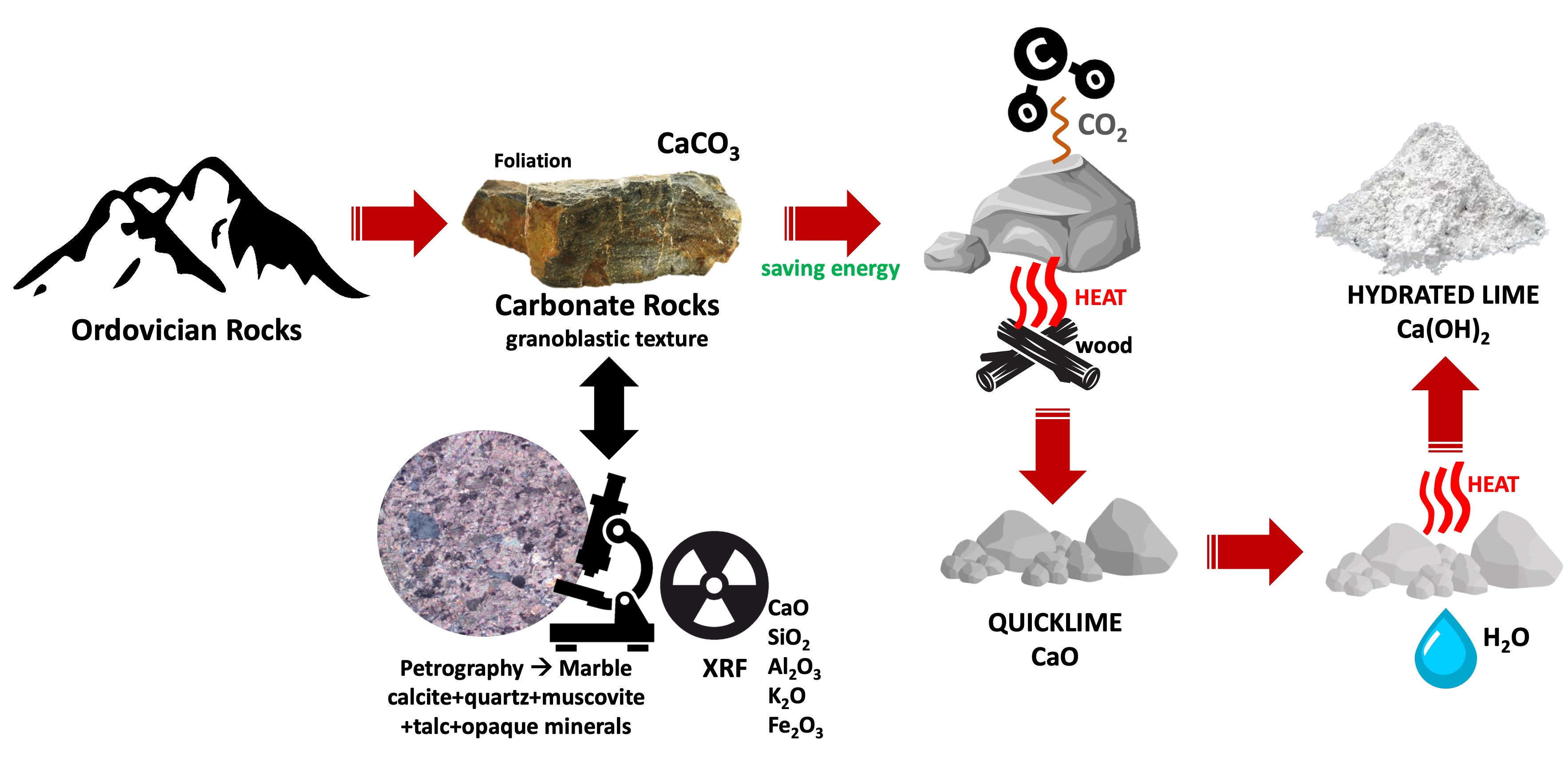Mineralogical and Geochemical Characteristics of Carbonate Rocks for Lime Industry in Ban Pong, Chiang Mai Province, Northern Thailand
DOI:
https://doi.org/10.48048/tis.2022.2016Keywords:
Permian limestone, Ordovician marble, Geologic material, Calcination, Chemical compositionAbstract
One of the oldest lime manufactures in Chiang Mai Province is located in a hillside village, Ban Pong, Hang Dong District, the western part of Chiang Mai City. Villagers still have conserved traditional production methods using wood-fired kilns and the primary material selection, an Ordovician marble. There are 2 massive amounts of carbonate rocks distributed in Chiang Mai Province; Permian limestone and Ordovician marble. However, the Ordovician carbonate rocks in Ban Pong were selected to produce high-quality lime by their primitive method (man-made) for a long time. Petrographical studies suggest that the Ordovician rock samples show a granoblastic texture with a slightly foliation represents by mica flakes. They are made up mainly of calcite, with very small amounts of quartz, muscovite, talc, and opaque minerals that can be identified as marble. The mineral compositions are according to the value of CaO, SiO2, Al2O3, K2O, and Fe2O3 in whole-rock analysis by XRF. The geochemical data suggest that marble in the Ban Pong area has a high CaO ratio and contains small amounts of muscovite, quartz, talc, and opaque minerals that may reduce the decomposition temperature during the calcination process. The Ordovician marble in Ban Pong is an appropriate raw material for traditional lime manufacture to saving energy in the production system.
HIGHLIGHTS
- Limestone has been a geologic material in the lime industry from the past to the presence of human society
- Villagers in Ban Pong (Chiang Mai Province, Thailand) selected the western Ordovician limestone mountains to produce lime by a primitive process instead of the eastern Permian limestone mountains
- The mineral- and chemical compositions of the Ordovician limestones were intensively analyzed to characterize the suitable raw materials for a primitive lime kiln
- The mineral composition indicated that the Ordovician limestone in this area is metamorphosed into an impure fine-grained marble
GRAPHICAL ABSTRACT
Downloads
Metrics
References
MM Miller. Lime. In: MM Miller (Ed.). Minerals Yearbook. USGS Mineral Resources Program, United States Geological Survey, Washington DC, 2007, p. 43.
National Lime Association. LIME: The essential chemical. National Lime Association, Virginia, 2007, p. 9.
JAH Oates. Lime and limestone-chemistry and technology, production and uses. Wiley-VCH Verlag GmbH, Weinem, Germany, 1998, p. 455.
M Hassibi. Factors affecting the quality of quicklime (CaO) from mining to manufacturing to usage. Chemco Systems L.P., Pennsylvania, 2009, p. 7.
C Kuentag. Limestone of Thailand. Department of Mineral Resources, Bangkok, Thailand, 1983, p. 27.
C Kuentag. Limestone resources and development in Thailand. Department of Mineral Resources, Bangkok, Thailand, 1992, p. 12.
Royal Thai Survey Department. Topographic map Amphoe San Pa tong, sheet 4746II, scale 1: 50,000. Royal Thai Survey Department, Bangkok, Thailand, 1999.
Royal Thai Survey Department. Topographic map Chiang Mai Province, sheet 4746I, scale 1: 50,000. Royal Thai Survey Department, Bangkok, Thailand, 1999.
F Baum, EV Braun, A Hess, KE Koch, G Kruse, H Quarch and M Siebenhuner. On the geology of Northern Thailand. Beihefte Geologische Jahrbunch, Hanover, Germany, 1970, p. 23.
F Baum, EV Braun, A Hess and KE Koch. Geologic map of Changwat Chiang Mai, scale 1:250000. Department of Mineral Resources, Bangkok, Thailand, 1982.
K Ueno. Gondwana/Tethys divide in East Asia: Solution from Late Paleozoic foraminiferal paleobiogeograpgy. In: Proceedings of the International Symposium on Shallow Tethys 5, Chiang Mai, Thailand. 1999, p. 45-54.
N Ishizawa, H Setoguchi and K Yanagisawa. Structural evolution of calcite at high temperatures: Phase V unveiled. Sci. Rep. 2013; 3, 2832.
British Standards Institution. Specification for building limes. British Standards Institution, London, 1995, p. 24.
Downloads
Published
How to Cite
Issue
Section
License

This work is licensed under a Creative Commons Attribution-NonCommercial-NoDerivatives 4.0 International License.







